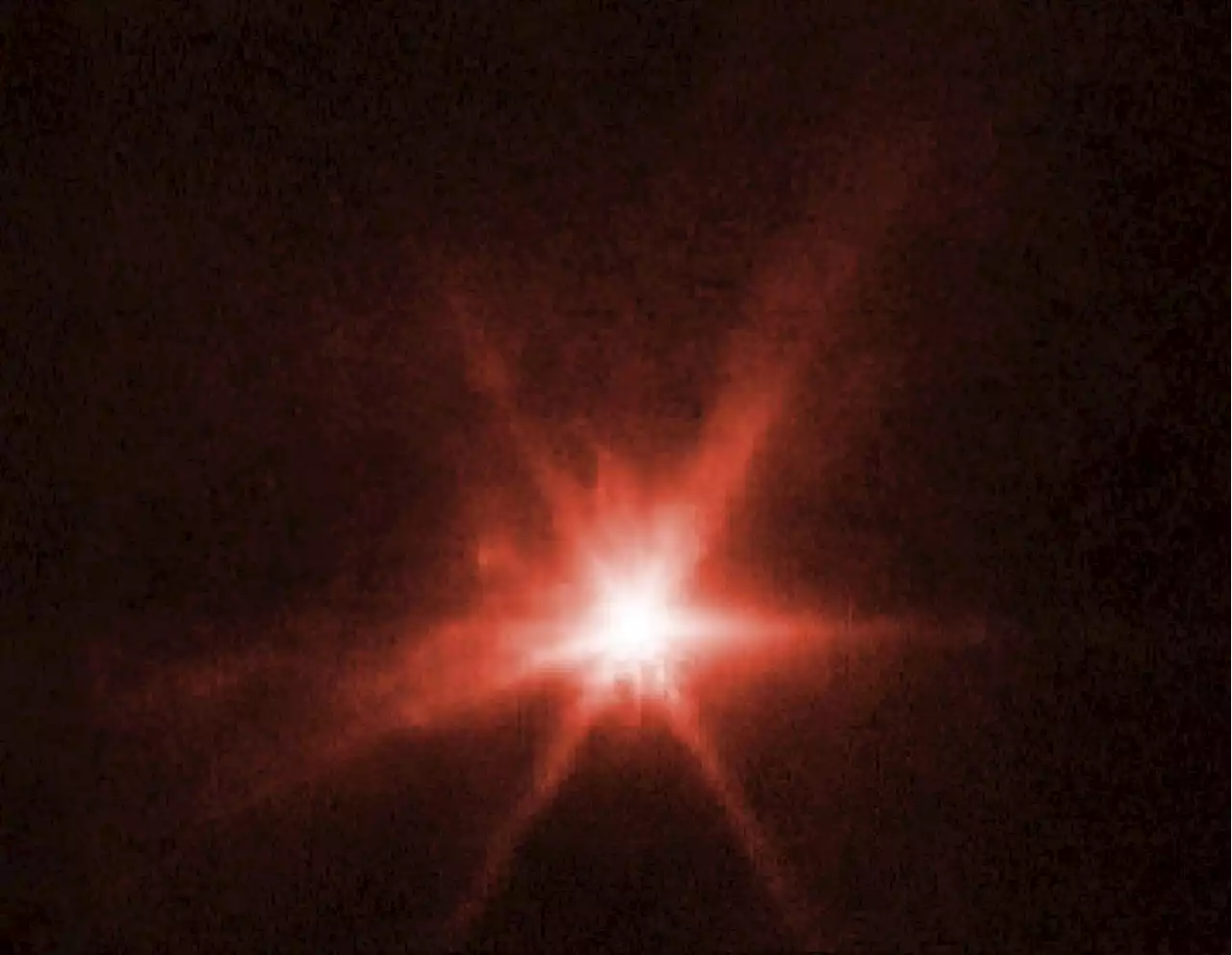First Time Webb and Hubble Make Simultaneous Observations of the Same Target Two of NASA’s great observatories had a front-row seat to a groundbreaking NASA test for defending Earth against potential asteroid or comet hazards. NASA’s James Webb Space Telescope and Hubble Space Telescope teamed u
, the asteroid moonlet in the double-asteroid system of Didymos on September 26, 2022, at 7:14 pm EDT. It was humanity’s first test of the kinetic impact mitigation technique, using a spacecraft collision to deflect an asteroid that poses no threat to Earth, and modifying the object’s orbit. DART is a test for defending Earth against potential asteroid or comet hazards.
Combined observations from Webb and Hubble will allow researchers to acquire knowledge about the nature of the surface of Dimorphos, how much material was ejected by the impact, and how fast it was ejected. In addition, Webb and Hubble captured the impact in different wavelengths of light – Webb in infrared and Hubble in visible. Observing the impact across a wide array of wavelengths will reveal the distribution of particle sizes in the expanding dust cloud.
Because of the asteroid’s speed of travel across the sky, observing the impact with Webb presented the flight operations, planning, and science teams with unique challenges. As DART approached its target, the teams performed additional work in the weeks leading up to the impact to facilitate and test a technique of tracking asteroids moving at speeds over three times faster than the original speed limit set for Webb.
Webb observed the impact over five hours total, capturing 10 images. The data was collected as part of Webb’s Cycle 1Hubble Images Show Movement of Ejecta After Impact
United States Latest News, United States Headlines
Similar News:You can also read news stories similar to this one that we have collected from other news sources.
 Hubble and James Webb Space Telescope spot plume from DART struck asteroidThis is the very first time humans have ever intentionally collided a spacecraft with an asteroid
Hubble and James Webb Space Telescope spot plume from DART struck asteroidThis is the very first time humans have ever intentionally collided a spacecraft with an asteroid
Read more »
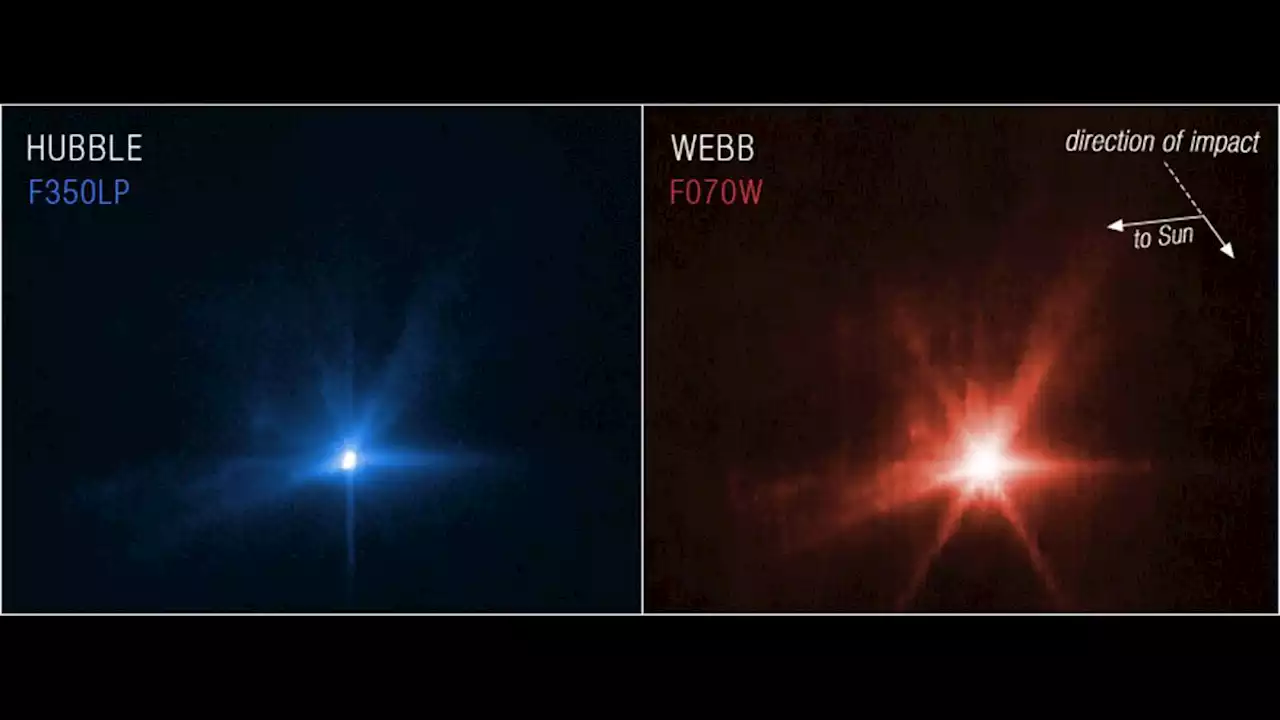 DART asteroid crash seen by James Webb, Hubble space telescopes (photos)Tereza is a London-based science and technology journalist, aspiring fiction writer and amateur gymnast. Originally from Prague, the Czech Republic, she spent the first seven years of her career working as a reporter, script-writer and presenter for various TV programmes of the Czech Public Service Television. She later took a career break to pursue further education and added a Master's in Science from the International Space University, France, to her Bachelor's in Journalism and Master's in Cultural Anthropology from Prague's Charles University. She worked as a reporter at the Engineering and Technology magazine, freelanced for a range of publications including Live Science, Space.com, Professional Engineering, Via Satellite and Space News and served as a maternity cover science editor at the European Space Agency.
DART asteroid crash seen by James Webb, Hubble space telescopes (photos)Tereza is a London-based science and technology journalist, aspiring fiction writer and amateur gymnast. Originally from Prague, the Czech Republic, she spent the first seven years of her career working as a reporter, script-writer and presenter for various TV programmes of the Czech Public Service Television. She later took a career break to pursue further education and added a Master's in Science from the International Space University, France, to her Bachelor's in Journalism and Master's in Cultural Anthropology from Prague's Charles University. She worked as a reporter at the Engineering and Technology magazine, freelanced for a range of publications including Live Science, Space.com, Professional Engineering, Via Satellite and Space News and served as a maternity cover science editor at the European Space Agency.
Read more »
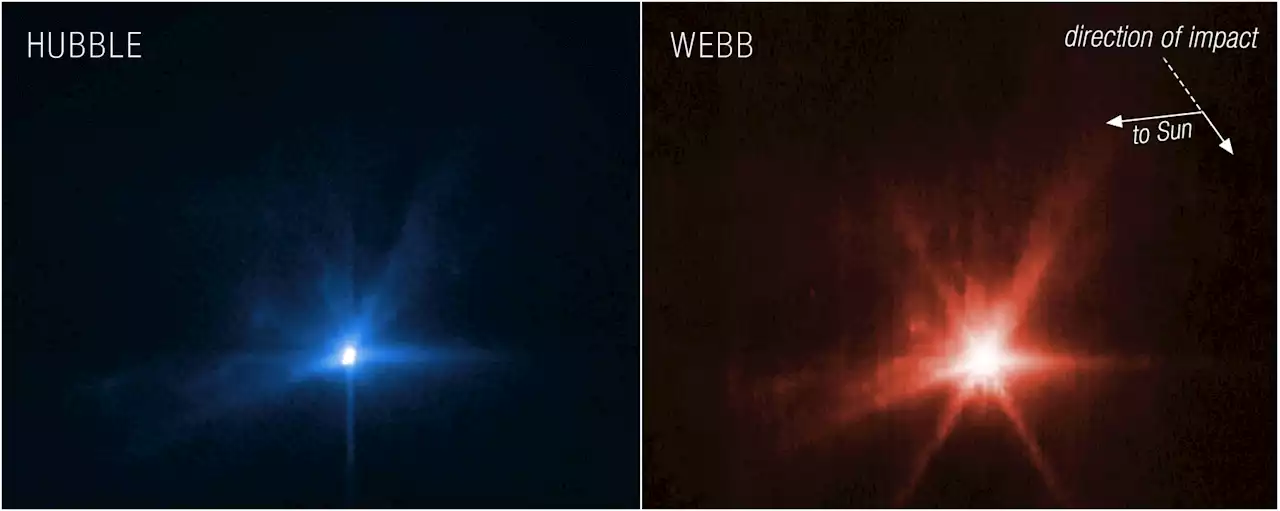 James Webb and Hubble telescope images capture DART asteroid collision | EngadgetIt was the first time the telescopes have observed the same celestial target simultaneously..
James Webb and Hubble telescope images capture DART asteroid collision | EngadgetIt was the first time the telescopes have observed the same celestial target simultaneously..
Read more »
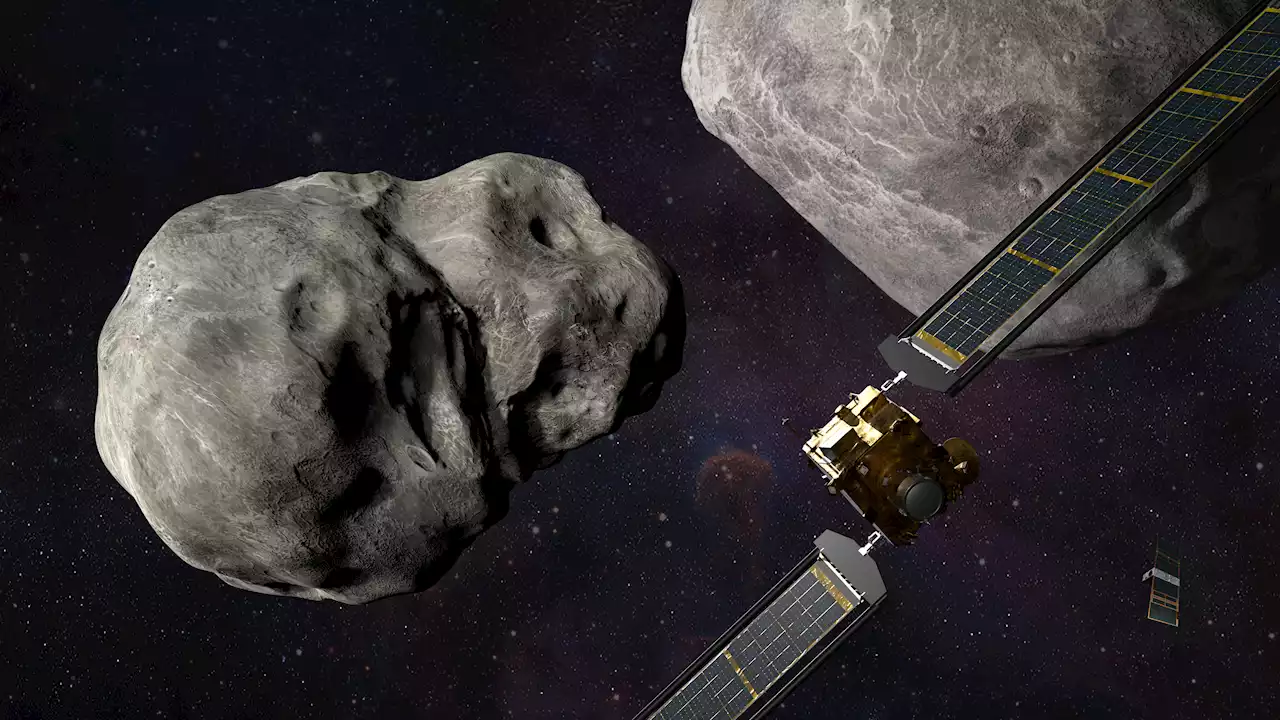 DART asteroid impact imaged by Webb and Hubble telescopes | Digital TrendsThe Hubble and Webb telescopes captured DART smashing into an asteroid this week – the first time they've simultaneously observed the same celestial target.
DART asteroid impact imaged by Webb and Hubble telescopes | Digital TrendsThe Hubble and Webb telescopes captured DART smashing into an asteroid this week – the first time they've simultaneously observed the same celestial target.
Read more »
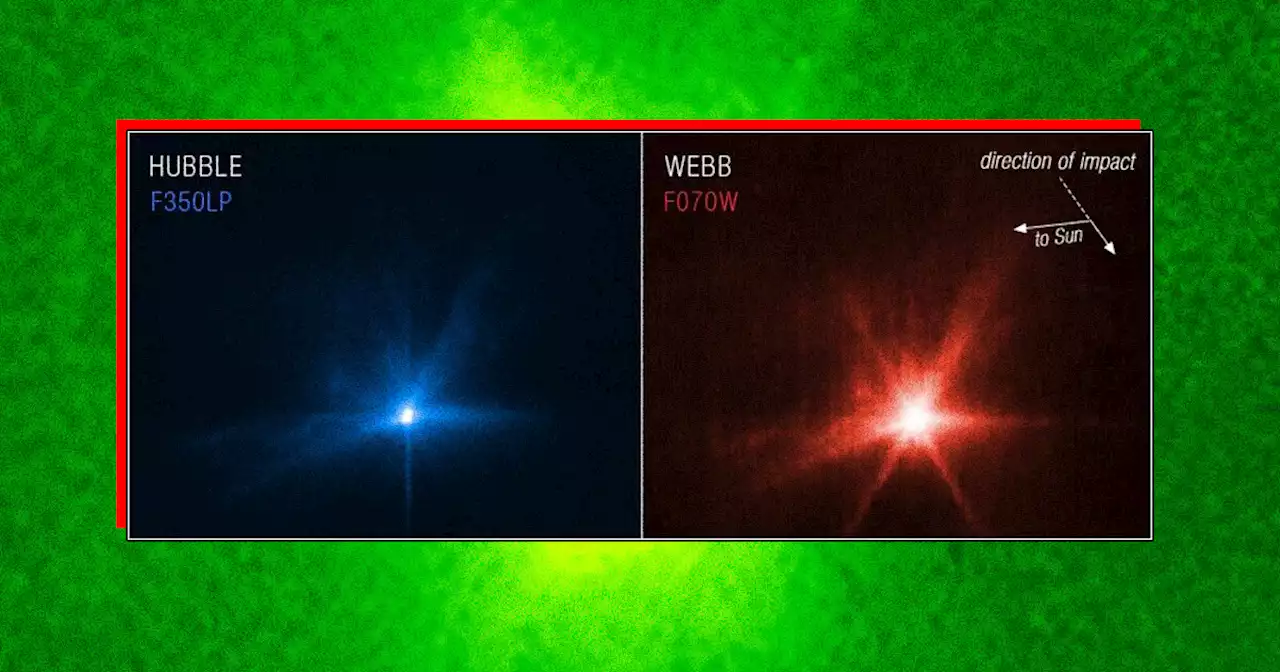 Webb and Hubble Release Amazing Views of NASA's Asteroid CollisionThe Hubble and James Webb space telescopes have teamed up, for the first time, to capture outstanding views of NASA's DART asteroid-smashing mission.
Webb and Hubble Release Amazing Views of NASA's Asteroid CollisionThe Hubble and James Webb space telescopes have teamed up, for the first time, to capture outstanding views of NASA's DART asteroid-smashing mission.
Read more »
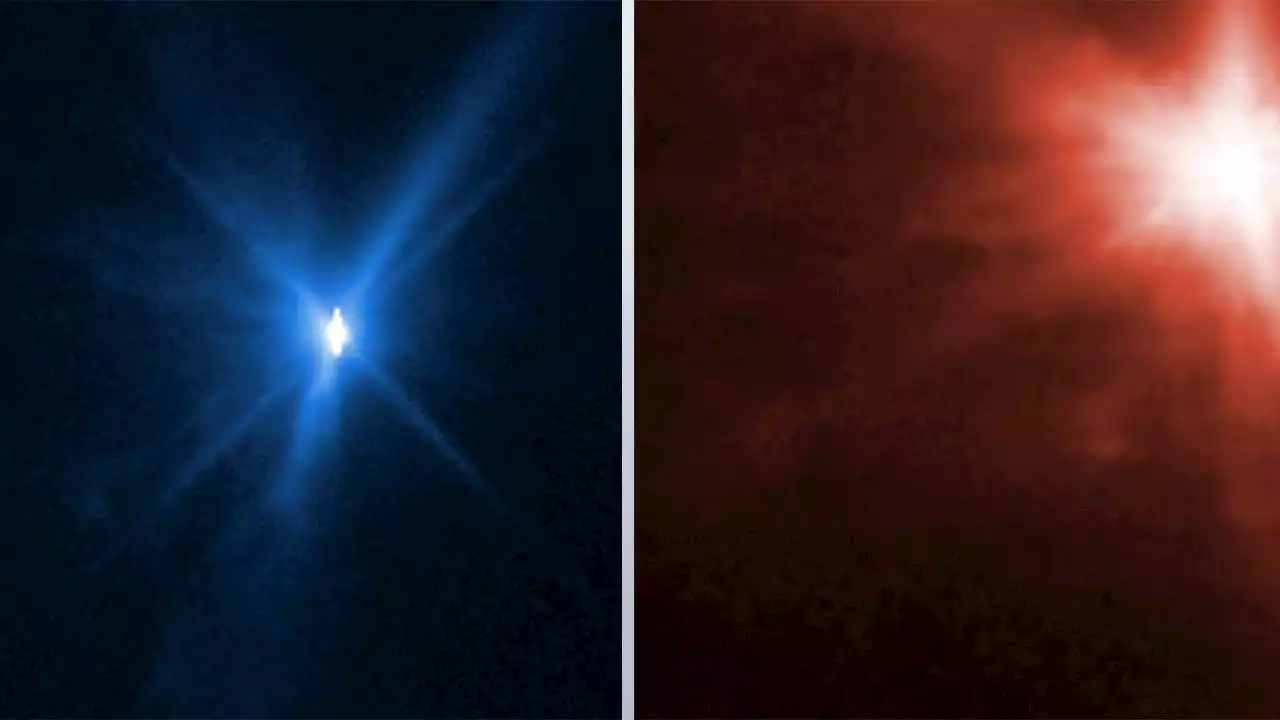 Webb, Hubble telescopes capture DART impact in stellar imagesDART’s direct impact was not captured by one but two space telescopes and the images are so cool.
Webb, Hubble telescopes capture DART impact in stellar imagesDART’s direct impact was not captured by one but two space telescopes and the images are so cool.
Read more »
